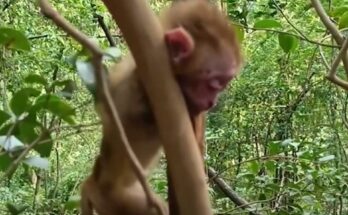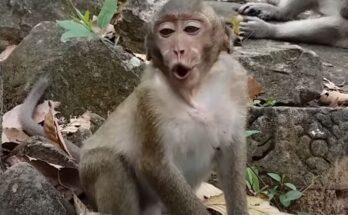Wild monkeys live fascinating, dynamic lives that reflect both their social complexity and adaptability to diverse habitats. Their behaviors and interactions offer remarkable insights into survival strategies and group dynamics in the animal kingdom. Spread across various continents, wild monkeys inhabit a wide range of environments, from dense tropical rainforests and dry savannas to mountainous regions and urban landscapes.
Social Structures and Dynamics
Wild monkeys are inherently social creatures, living in groups known as troops or bands. These groups vary in size, ranging from a few individuals to several dozen, depending on the species and habitat. Within these groups, intricate hierarchies are established, often dominated by an alpha male or female. This pecking order determines access to resources such as food, mates, and shelter. Grooming plays a crucial role in maintaining social bonds and resolving conflicts within the troop. This behavior, beyond hygiene, acts as a form of communication that fosters trust and cooperation.
Foraging and Diet
Monkeys are omnivorous and display remarkable versatility in their diets. Their food sources include fruits, leaves, seeds, flowers, insects, and even small animals. Foraging is a daily activity, requiring intelligence and problem-solving skills to locate and access food. Some species, such as capuchins, use tools like sticks or rocks to crack open nuts or extract insects from tree bark. This behavior highlights their cognitive abilities and adaptability to their environment.
Communication and Intelligence
Monkeys exhibit advanced communication skills, employing vocalizations, facial expressions, and body language to convey emotions and warnings. Alarm calls, for instance, are specific to different predators, enabling the group to respond effectively to threats. Their intelligence is further demonstrated in their ability to learn, remember, and even mimic behaviors. This adaptability is crucial for survival, particularly in changing or fragmented habitats.
Reproduction and Parenting
The reproductive behaviors of monkeys vary widely among species. Female monkeys typically exhibit clear signals of fertility, attracting males during mating seasons. After a gestation period ranging from a few months to nearly a year, depending on the species, mothers give birth to one or occasionally two offspring. Parental care, primarily provided by the mother, is vital for the infant’s survival. In some species, such as marmosets and tamarins, fathers and other group members actively participate in raising the young, demonstrating cooperative parenting.
Threats and Challenges
Life in the wild is fraught with challenges. Predation by larger animals, competition for resources, and harsh environmental conditions are constant threats. Additionally, human activities such as deforestation, hunting, and urban encroachment pose significant dangers to many monkey populations. In response, some monkeys have adapted to living near humans, scavenging food from urban areas or farms. However, this proximity often leads to conflict, with monkeys being seen as pests.
Conservation and Coexistence
Efforts to protect wild monkeys and their habitats are crucial for their survival. Conservation programs focus on preserving forests, creating wildlife corridors, and combating illegal wildlife trade. Education about the ecological role of monkeys helps promote coexistence between humans and these intelligent creatures.
In summary, the life of wild monkeys is a blend of survival, social interaction, and adaptation. Observing their behaviors reminds us of the intricate balance of nature and the importance of preserving it for future generations. Their lives, while challenging, are a testament to resilience and the beauty of the natural world.
4o


